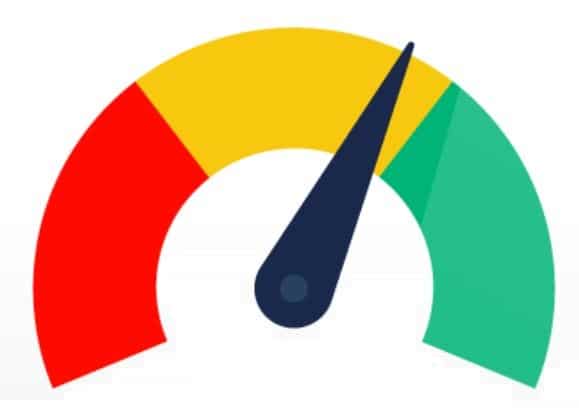Insights and openion by Glenda Cardone, Strategic, Operational Marketing, and Social Media Expert.
Social networks are now an integral part of our daily lives.
Instagram, Facebook, Twitter,… are just some of the most popular and widely used social media platforms that record daily shares, updates, and appreciations from all over the world.
If we notice, not even radio and television have established themselves as media so quickly in our lives.
In the 1960s for example, very few people still owned a TV. It was different for social media.
With the spread of the internet and even more so with the commercialization of ever more powerful smartphones, in a short time, everyone started to use social networks and related applications. However, one does not always make conscious use of these tools and often underestimates certain aspects that need to be known if one wants to avoid unpleasant consequences both on personal and social levels.
Pros of Social Networks
When talking about social media channels and networks, it is impossible not to think of a type of global communication and information flows that move in real time. Distances have shortened and it takes very little to get in touch with people who may also be on the other side of the world.
Social media are ‘convenient’ means, accessible by anyone and in just a few clicks. All you need is an email address and a password, and you are immediately connected to virtual reality via an online community.
Thanks to social networks you can nurture your interpersonal relationships, not only staying in touch with those you already know but also making new friends and acquaintances. This can also be true in the business sphere. Many people nowadays find a new profession through LinkedIn or Facebook.
You can have social media postings about your passions and thoughts so that you can seek comparison with your contacts. We all have a desire to be heard and to actively relate to those who have something in common with us.
We can use social media to freely express our moods in the hope of being understood, find a community of supporters or as a simple outlet.
Social media marketing is an incredibly effective communication practice for the online promotion of many products, activities, and services. Since social is free, social media campaigns are competitively priced compared to traditional advertising.
Cons of Social Networks
If used thoughtlessly, social networks can become alienating, and one can almost completely lose touch with reality. Having many friends and contacts on social networks is not the same as having them in real life. One can become addicted to social networks to such an extent that one’s work productivity is impaired.
It can happen that our personal data are used by others. Identity theft is one of the most frequent risks that social users must deal with. Care must be taken if one also uses these services for work. There are often complaints about privacy, but the most important social networks provide the possibility of setting our profiles to choose what to make public or keep private.
However, we must be careful and remember that sharing content on major social networks is public. It is therefore necessary to change the settings of each social to protect one’s privacy. Also make sure that what you is shareable content for social channels. Information from the web is not always truthful. It is up to the reader to weigh everything and check the sources.
The Usefulness For The Non-Profit Sector
First, let’s cover The Third Sector and its main characteristics.
The term Third Sector identifies a set of organizations of a private nature but aimed at producing goods and services for public or collective use. It is based on the principles of equality, solidarity, participation, and mobilization of stakeholders. It is characterized by the presence of volunteers, the absence of profit motive, and the production of a relational good. The user is not a passive subject, but his consent is sought as he becomes a kind of consumer.
A non-profit organization is an organization that, not intended to make a profit, reinvests profits entirely for organizational purposes. The notion of the Third Sector began to emerge in the second half of the 20th century, mainly in the more economically advanced countries, along with an increased social focus on solidarity activities. The relevance of the phenomenon, whose growth was accelerated by the attention paid by the media, reached such proportions as to constitute a reality that even legal systems soon had to take note of.
In law, the expression refers to the solidaristic purposes, to the fact that there is no distribution of profits to the members, that, on the contrary, any profit produced is destined for third parties, and that it does not carry out commercial activities except limited to actions suited to the achievement of social purposes.
Communication For The Non-Profit Sector
The constant increase in the need to intervene in the social field in the face of ever-decreasing public funds means that non-profit organizations are
increasingly turning to the private sector to support their initiatives, harness an engaged audience, and promote stories and humanitarian causes.
All potential donors and possible disseminators of a non-profit organization’s mission and image have so far been reached through traditional media communication; what the association proposes in which a set of knowledge necessary for a good relationship with the media, taking into account which channel is best for the target audience to be reached, whether it is:
- Awareness-raising campaign: an act of communication intended to last over time, with the aim of informing on a specific issue;
- Fundraising campaign: A communicative act capable of involving as many people as possible, including economically.
To these traditional tools are now added the possibilities offered by the Internet. Organizations in the sector are growing. The best method is still face-to-face, supported by an advertising campaign and the use of e-mail, to try to involve as many people as possible. For promotion to be successful, one must consider using all the different tools for nonprofits, without neglecting any of them.
The integration of multimedia tools with the Web, such as text messaging and interactive television, has enabled individuals to become active players through access to social networking platforms. Today, a non-profit
the organization has countless channels at its disposal to raise funds, such as donation pages, sponsored or pay-per-click Web pages, online catalogs, affiliate programs, Cause Related Marketing, activities, and direct marketing via e-mail.
On the Internet, the receiver can at any time turn into the sender and vice versa, and its influence affects every aspect of social relations, especially since social networks have become very successful, connecting all those who in some way share a certain interest. This potential should be exploited to gain more visibility, to reach possible donors who would otherwise be unreachable, and for the availability and practicality of fundraising tools. It is necessary to distinguish oneself from others, to have a two-way exchange with one’s target, to listen, and perhaps create a community. The main objective remains the creation of a profound relationship between the asker and the donor. While traditional communication is addressed to categories of readers or spectators who receive the message in a tendentially passive manner, thanks to the typical tools of the social network, cause Related Marketing, is a project that combines a marketing operation, aimed at pursuing commercial objectives, with a social cause.
Transparency of one’s aims and means is an important factor in convincing undecided or mistrustful people. Constantly informing about how the money collected is used, inviting beneficiaries to write testimonials to be circulated in the donor network, and posting photos and videos of the works built allows a concrete perception of the results that can help convince those who do not trust the social use of the money they donate. All this is done easily thanks to the functions of creating materials and sharing them in the network.
It is important to be able to quickly handle the emergence of problems and forms of dissent; reacting too late can give the impression of wanting to hide something. Unidirectional communication and improvisation (referring to the use of the channel), are mistakes not to be made in this sphere, remembering that people’s behavior and reactions on the Internet are much more uninhibited, and faster, without many obstacles and protections than in the offline world. It is, therefore, necessary to acquire a new competence in online conversation and to know the right tools to control a discussion without side effects.
Key Elements Of Social Networks
Participation, listening, emotion, and sharing: these are the elements on which every Third Sector entity must focus if it wants to succeed. These are words that go perfectly well with voluntary activities and can also be put into practice thanks to new technologies, platforms, and tools that represent an extraordinary opportunity, since they contribute to establishing and maintaining a continuous dialogue and propose a more direct and participatory way of narrating activities and experiences, interacting with onlookers and sympathizers and increasing consensus and confidence in one’s work.
Participating, engaging, and being involved are terms associated with the importance of an increasingly active and two-way relationship with groups of people and supporters of associations. Most organizations in the non-profit world have always been committed to involving people through volunteering and, in this context, social media represent a valuable tool for extending the areas and moments of activism as well as the number of people who can contribute in various ways.
Active participation also means having the opportunity to create new original content and make it available to others. Getting people to mobilize is not easy, but it is an achievable goal by moving through the right channels. What characterizes the non-profit sector is not the economic factor, but the feelings, the emotions that one must be able to manifest so that others do the same. It is in this context that another element comes into play, the sharing of experiences, advice, and information, to be made usable and from which to derive benefit. Skills and experiences are made available to others, regardless of whether there is a knowledge link or not. This exchange is based on reciprocity, to form relationships, both within activist groups and between them and the associations themselves. But not only that. Nowadays, it is possible to share anything: photos, videos, messages, comments, and letters. Think of the various phenomena of file sharing, peer-to-peer, blogs, forums, social bookmarking, and social networking, where knowledge is shared, donated, and made reciprocal.
A Multiplier Effect For The Non-Profit Sector
A high percentage of charities are present on the main social networks and many of them have a blog, which shows how social media have become an integral part of their communications strategy. They are used constantly, trying to familiarise themselves with users. The increase in these tools and platforms makes the work of companies and organizations more complex in attracting and retaining large numbers of users. This is because, the ease of use, increases the number of competitors, facilitates the spread of distractions that distance potential interlocutors from the message created, and makes it difficult to establish a long-term relationship based on trust. One must always think of new ways to engage the audience, without having the certainty that they will work. Increased investment in advertising and communication is no longer synonymous with success.
Not least because customers are increasingly diverse and capturing a large share of the market is very difficult. Added to this, the slightest mistake can prove fatal, given the speed with which news is able to spread, thanks to (or because of) the new media. We live in an era where everything is and must be a click away. Where information is thrown onto the net and it is people who are the protagonists and who decide how to use or be active users of information.
A much more social era, where opinions, conversations, the creation of relationships between people, and the personal reputation of those who participate have a significant weight in the participants’ decision-making process. Thus, social tools can only be seen as a means of entertainment.
If many people use them and if the number of users is constantly increasing, it means that they have features that can improve the society in which one lives.
The Impact
A very important advantage in favor of using social networks comes from the possibility of sharing content through a wide range of communication opportunities: the traditional computer, mobile devices such as mobile phones and tablets, and digital televisions connected to the Internet. Social networks can be made even more ‘human’ to the point of transforming them into tools to fulfill social causes, allowing the full meaning of the fundraising process to be realized and a deep relationship with people to the point of making them passionate about the social cause, so much so that they become ambassadors and participate more actively. The use of social networking enables actions that are difficult to achieve with other communication tools. Just think of how a simple photograph published a few moments earlier by any site, can be introduced into all media channels, retouched, inserted into a video or photo album, receive comments and shares: all elements that allow the news to spread and, to the broadcaster, to make itself known, exploiting this multiplier effect that social platforms and tools are able to create. The more an idea stimulates dialogue, the more it will spread. What is strengthened is the network, leading to a possible increase in the number of its participants.
For interest and discussion to develop around the organization, the quality of the message communicated is also important. In this regard, it may be interesting to understand how non-profit organizations can exploit different social tools so that their message can be effective.
Exploiting social media to tell their story: the purpose of the Third Sector The useful solutions for non-profit organizations, as far as new technologies are concerned, are different. These include video conferencing via the Internet, i.e. telephone services (voice, SMS) that use the Internet instead of the traditional telephone network. Telemedicine, Tele assistance, education, and distance learning fall into this category. Also to be considered are open-source platforms, and network solutions developed and maintained by communities of programmers who collaborate on a voluntary basis. Examples are online donations, site creation through free platforms, and the creation of web radios.
Increasingly important are cloud computing, software applications that allow services to be delivered on the move via small devices. Applications to make the administration and management of resources, communication, and fundraising more efficient fall into this category. However, the most successful means are social media and social networks, which are useful for engaging networks of users. These tools allow high collaboration and easy access at low costs. It is these advantages that make them indispensable for non-profit organizations, making it easy to create relationships with a larger number of users and turn them into spokespeople, volunteers, and donors.
The network presence of a non-profit organization is usually articulated through several channels. Rarely does a campaign target users of only one social network, but it increases the degree of involvement by integrating communication across different social networks. Videos uploaded on YouTube can be included on the association of blog, perhaps also posted on Facebook or other social media accounts.
The word curation takes up the English word care, which can be translated as ‘taking care’. Their purpose is to facilitate the reader in a narrative journey through selected content, making it easier to organize and disseminate quality information. This category includes search engines that, through certain keywords, try to provide the user with what may be most relevant and of quality. This also provides a sort of guarantee for the most relevant data around which acts of sharing and conversation are realized, aimed at creating value of the content itself, of the site that published it, and of its author, increasing the quality of a specific topic aimed at conveying a precise message.
Before the content curation phase, however, the creation of the information, visual content, and message becomes important. This activity is carried out through the new
digital social networks.
Looking for help with social media for non-profits? Get in touch here.









